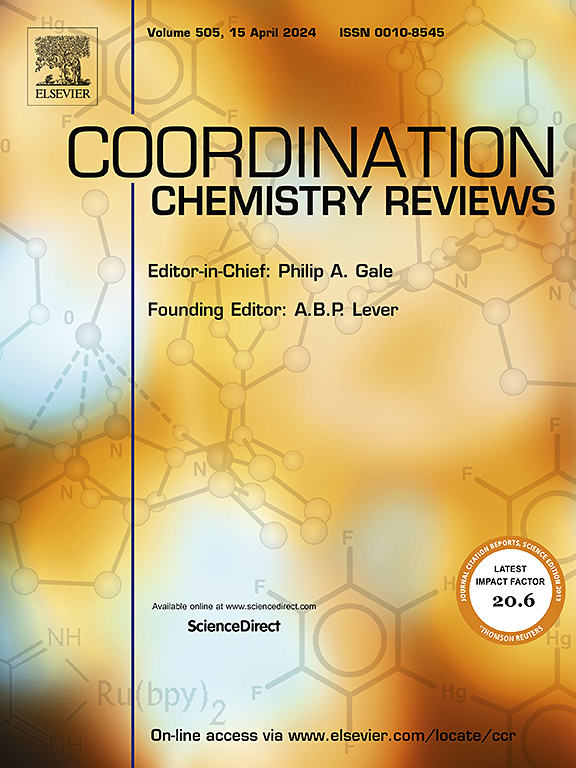Stimuli-responsive metal-free phosphorescent materials: From design and mechanisms to emerging applications
IF 20.3
1区 化学
Q1 CHEMISTRY, INORGANIC & NUCLEAR
引用次数: 0
Abstract
Stimuli-responsive room-temperature phosphorescence (RTP) material hold great potential for diverse optoelectronic applications due to their high sensitivity and rapid response. Among these, metal-free RTP systems have emerged as a particularly promising research focus, attributed to their advantageous properties, such as low toxicity, excellent biocompatibility, and ease of processing. Despite the significant strides made in this dynamic field, a comprehensive review that consolidates the latest breakthroughs remains conspicuously absent. In this review, we highlight recent advancements in stimuli-responsive metal-free RTP materials, including organic molecules, polymers, carbon dots, and biomass. We discuss their intricate design strategies, dynamic behaviors under various external stimuli, and stimuli-responsive mechanisms, along with their potential applications in the fields of information security, sensing, bioimaging, and smart optical devices. Additionally, we present a range of perspectives that emphasize the current challenges and promising future opportunities associated with stimuli-responsive metal-free RTP materials across various domains. We anticipate that this review will offer valuable insights and guidelines to inspire more innovative research on stimuli-responsive metal-free RTP systems, thereby promoting the further development of smart luminescent materials and their multifunctional applications.

求助全文
约1分钟内获得全文
求助全文
来源期刊

Coordination Chemistry Reviews
化学-无机化学与核化学
CiteScore
34.30
自引率
5.30%
发文量
457
审稿时长
54 days
期刊介绍:
Coordination Chemistry Reviews offers rapid publication of review articles on current and significant topics in coordination chemistry, encompassing organometallic, supramolecular, theoretical, and bioinorganic chemistry. It also covers catalysis, materials chemistry, and metal-organic frameworks from a coordination chemistry perspective. Reviews summarize recent developments or discuss specific techniques, welcoming contributions from both established and emerging researchers.
The journal releases special issues on timely subjects, including those featuring contributions from specific regions or conferences. Occasional full-length book articles are also featured. Additionally, special volumes cover annual reviews of main group chemistry, transition metal group chemistry, and organometallic chemistry. These comprehensive reviews are vital resources for those engaged in coordination chemistry, further establishing Coordination Chemistry Reviews as a hub for insightful surveys in inorganic and physical inorganic chemistry.
 求助内容:
求助内容: 应助结果提醒方式:
应助结果提醒方式:


